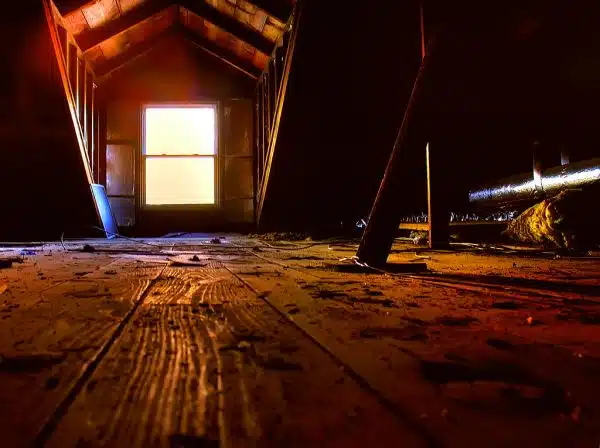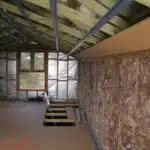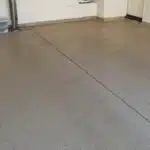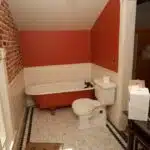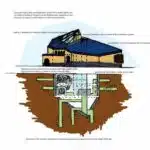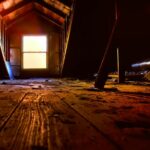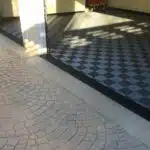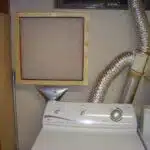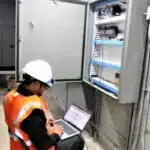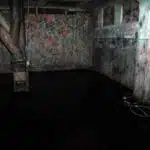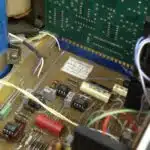Attic insulation is an essential component of any home’s energy efficiency. Properly insulating an attic can help to reduce energy costs, increase comfort levels, and extend the lifespan of your roof. Insulating an attic may seem like a daunting task, but with the right tools and knowledge, it can be done easily and effectively.
As a home insulation expert, I have seen firsthand the benefits that come from insulating attics properly. However, many homeowners are unaware of the proper techniques for insulating their attics. In this article, we will discuss the steps necessary to successfully insulate your attic and ensure that your home is as energy-efficient as possible. Whether you are looking to save money on your energy bills or simply want to improve the overall comfort of your home, insulating your attic is a simple and effective way to accomplish these goals.
Understanding The Importance Of Attic Insulation
Attic insulation is a critical component of any home’s energy efficiency strategy. It plays a crucial role in maintaining the temperature of your home, keeping you comfortable and reducing your energy bills. The importance of proper attic insulation cannot be overstated, as it helps to create an air barrier that prevents heat from escaping during the winter months and prevents hot air from entering in the summer.
One of the most significant benefits of attic insulation is its ability to improve indoor air quality. Properly insulated attics can help prevent moisture buildup, which can lead to mold growth and other respiratory problems. Additionally, insulation can reduce noise pollution from outside sources like traffic or construction sites, creating a more peaceful living environment.
Furthermore, proper attic insulation can increase the resale value of your home. A well-insulated attic is an attractive feature for potential buyers since it indicates that the home is energy-efficient and requires less maintenance. By investing in proper attic insulation, homeowners can reap numerous benefits that will ultimately save them money in the long run.
If you are considering insulating your attic, evaluating your current insulation levels is a crucial step in the process. Understanding how much insulation you currently have and whether it meets modern energy efficiency standards can help you determine what steps need to be taken next to improve your home’s thermal performance.
Evaluating Your Current Attic Insulation
- Before upgrading insulation levels, it is necessary to assess existing insulation. This should include inspecting the insulation type, its age, and its condition.
- Evaluating the attic and the insulation should include checking the interior walls, the ceiling, and any other accessible areas.
- Depending on the results of the assessment, attic insulation can be upgraded by adding more insulation or replacing it with higher rated insulation.
- It is important to note that attic insulation should reach the recommended R-value as determined by local building codes and energy efficiency requirements.
Assessing Existing Insulation
When it comes to evaluating your current attic insulation, assessing the existing insulation is an essential first step. As a home insulation expert, I recommend that you start by measuring the depth of your current insulation. This will help you determine whether your attic has enough insulation to provide sufficient warmth during cold weather and keep your home cool in the summer.
Next, check for gaps in your existing insulation. These can occur due to settling or damage to the insulation over time. Gaps can cause heat loss and reduce the overall effectiveness of your attic insulation. As part of the assessment process, look for any damage caused by pests such as rodents or insects that may have chewed through your existing insulation.
By assessing the depth and checking for gaps in your existing insulation, you can get a better understanding of how well insulated your attic is and whether it needs to be updated or replaced. Remember, proper attic insulation is crucial for maintaining a comfortable indoor environment while also reducing energy costs. So take the time to assess your existing insulation before making any decisions about updating or replacing it.
Upgrading Insulation Levels
Assessing the effectiveness of your current attic insulation is crucial in determining whether you need to upgrade its levels. Insulation levels can impact your home’s energy efficiency, comfort, and even indoor air quality. Upgrading your insulation levels can provide significant benefits such as reducing energy costs and improving thermal performance. However, upgrading insulation levels can also be a costly investment, making it essential to conduct a cost analysis before making any decisions.
When considering upgrading your insulation levels, it’s vital to ensure that the new insulation is compatible with the existing one. Adding insulation on top of old or damaged material may not be effective and could even cause problems such as mold growth or moisture buildup. It’s also essential to consider the R-value of the new insulation material, which measures its thermal resistance. The higher the R-value, the more effective the insulation will be at reducing heat transfer.
Upgrading your attic insulation levels is an investment that can provide long-term benefits for your home’s energy efficiency and comfort. By conducting an assessment of your current insulation effectiveness and considering a cost analysis and compatibility with existing materials, you can make informed decisions on upgrading your attic insulation levels to achieve optimal thermal performance for your home.
Determining The Type Of Insulation You Need
After evaluating your current attic insulation, it is important to determine the type of insulation you need. One of the first decisions you will need to make is whether to use blown in or batt insulation. Blown in insulation is a popular choice for attics because it can be quickly and easily installed, and it can fill in small gaps and crevices that may be present in your attic space. Batt insulation is another option that comes in pre-cut panels or rolls that must be laid out manually.
When deciding between blown in and batt insulation, there are a few factors to consider. First, blown in insulation tends to have a higher R-value per inch than batt insulation, which means that it provides better thermal resistance. This can help keep your home warmer during cold winter months and cooler during hot summer months. However, batt insulation may be easier to install if you have an irregularly shaped attic space or if you have obstructions like pipes or ductwork that may interfere with the installation process.
Another consideration when choosing the type of insulation for your attic is the R-value. The R-value measures how well the insulation resists heat flow and is determined by factors such as thickness, density, and material type. The higher the R-value, the more effective the insulation will be at reducing energy loss and improving comfort levels in your home. Your climate zone will also play a role in determining what R-value you need for your attic.
- Consider hiring an experienced professional to install your attic insulation.
- Look for eco-friendly options when selecting your insulation materials.
- Don’t skimp on quality when selecting your insulation – investing in high-quality materials will save you money on energy bills over time.
As you move forward with insulating your attic, it’s important to gather all of the necessary tools and materials before beginning the process. This includes things like safety equipment (such as gloves and goggles), measuring tape, utility knives, and of course, your chosen insulation material. By being prepared and having everything you need on hand, you can make the installation process as smooth and efficient as possible.
Gathering The Necessary Tools And Materials
Like a painter needing their brush and canvas, insulating an attic requires specific tools and materials. Choosing the right ones can make all the difference in creating a safe and comfortable home environment. When selecting materials, it’s important to consider factors such as desired R-value, moisture resistance, and fire safety ratings. Fiberglass batts, blown-in cellulose, and spray foam are popular choices for insulation, but each has its own advantages and disadvantages.
Tool usage is equally important in ensuring a successful insulation project. Basic tools like a utility knife, staple gun, work gloves, and safety goggles are essential for any insulation job. Other tools may be necessary depending on the type of insulation being used. Blown-in insulation requires special equipment like an insulation blower machine while spray foam insulation requires a spray foam gun. These tools not only make installation easier but also increase efficiency.
Now that you have chosen your materials and gathered your tools, it’s time to prepare your attic for installation. This involves clearing out any debris or obstructions that may impede the installation process such as old insulation or storage boxes. Additionally, vents should be inspected to ensure proper ventilation before installing new insulation. Proper preparation sets the foundation for a successful installation that will provide long-lasting comfort in your home.
Preparing Your Attic For Insulation
Now that you have gathered all the necessary tools and materials, it’s time to assess your attic’s ventilation and check for pests. Proper ventilation is crucial to prevent moisture buildup, which can lead to mold growth and rotting wood. Make sure that your attic has enough vents and that they are not blocked by insulation or other objects. If you notice any signs of poor ventilation, such as condensation on windows or walls, consider installing additional vents or a whole-house fan.
Checking for pests is also essential before insulating your attic. Pests such as rodents, birds, and insects can damage insulation, wiring, and other components in your attic. They can also create nests that may attract more pests in the future. Look for any signs of pest activity such as droppings, chewed wires or insulation, or holes in the ceiling or walls. If you find any evidence of pests, hire a professional exterminator to remove them before proceeding with the insulation.
Once you have assessed your attic’s ventilation and checked for pests, it’s time to prepare your attic for insulation installation on the floor. This involves clearing out any debris or objects from the attic floor and ensuring that there are no gaps or holes in the ceiling below. You should also seal any air leaks around pipes, ducts, chimneys, and other openings using caulk or foam insulation strips. By properly preparing your attic for insulation installation on the floor, you will ensure that your home is energy-efficient and comfortable throughout the year.
Transition: Now that you have prepared your attic for insulation installation on the floor by checking its ventilation and pest presence while clearing out debris from the floor space; it’s time to move on to installing insulation itself.
Installing Insulation On The Attic Floor
When it comes to insulating an attic, installing insulation on the attic floor is a crucial step. This is because heat rises, and without proper insulation in the attic, it can escape through the roof, causing your home’s heating system to work harder and use more energy. There are different types of insulation you can choose from when insulating your attic floor, including fiberglass batts and blown-in cellulose.
Fiberglass batts are a popular option for homeowners because they are relatively easy to install and have a low cost per square foot. They come in pre-cut lengths that fit standard joist spacing and can be easily laid down on the attic floor. Blown-in cellulose is another option that involves using a machine to blow loose fill cellulose into the space between the joists. While it may be slightly more expensive than fiberglass batts, blown-in cellulose provides better coverage and has a higher R-value per inch.
When considering which type of insulation to use for your attic floor, it’s important to also factor in cost comparison. While fiberglass batts may be cheaper upfront, blown-in cellulose may save you money in the long run with its superior coverage and higher R-value per inch. Ultimately, the best type of insulation for your attic will depend on factors such as your budget, climate zone, and personal preferences.
Transitioning seamlessly into installing insulation on attic walls: Now that we’ve covered how to insulate your attic floor, let’s move onto another important aspect of insulating your attic – installing insulation on the walls.
Installing Insulation On Attic Walls
After properly insulating your attic floor, it’s essential to also insulate the walls to ensure maximum energy efficiency. Think of your attic as a thermos; without insulation on all sides, heat will escape through any available gaps. That’s why it’s crucial to install insulation on the attic walls, in addition to the floor.
Before you start installing insulation on your attic walls, you’ll need some tools. You’ll require a utility knife or scissors for cutting insulation batts to size, a staple gun or insulation supports for securing the batts in place, and a tape measure for measuring the length of each wall section accurately. It’s also advisable to wear protective clothing and safety gear such as gloves and goggles because fiberglass can cause skin irritation and breathing difficulties.
One common mistake many people make is not sealing air leaks and drafts before installing insulation on their attic walls. This mistake results in reduced effectiveness of the insulation because air will still be escaping through gaps and holes around windows, vents, pipes, and ductwork. It’s best to seal any leaks first using caulk or foam sealant before installing the insulation batts. This way, you’ll maximize the effectiveness of your insulation while preventing drafts and improving indoor air quality.
To further improve energy efficiency in your home, it’s essential to address any air leaks or drafts that may be present in other areas aside from the attic walls. In the next section, we’ll look at how you can seal these leaks effectively using various methods and materials. By doing so, you’ll enjoy better temperature regulation indoors while saving money on energy bills throughout the year.
Sealing Air Leaks And Drafts
Air leaks are one of the biggest culprits for high energy bills and a drafty home. Common air leaks in attics include gaps around recessed lighting fixtures, plumbing stacks, exhaust fans, and ductwork. These areas allow air to escape from your living space into the attic. Not only does this cause a loss of conditioned air, but it can also lead to moisture buildup and mold growth.
There are some DIY solutions that homeowners can do to seal air leaks in their attics. One option is to use caulking or weatherstripping around windows and doors. Another is to add insulation around pipes or ductwork where they enter or exit the attic floor. However, it’s important to note that these solutions may not be enough if there are larger gaps or cracks in your attic.
For a more thorough solution, professional air leak testing is recommended. This process involves using specialized equipment to detect any areas of air leakage throughout your home, including the attic. Once identified, a professional insulation contractor can then use appropriate materials such as expanding foam or spray foam insulation to seal up these gaps and cracks. The benefits of professional air leak testing include lower energy bills, improved indoor comfort, and increased home value.
Moving forward with insulating attic access points…
Insulating Attic Access Points
Attic access points, such as doors or hatches, can be a major source of heat loss in your home. To properly insulate these areas and prevent energy waste, it’s important to seal any gaps or cracks that may exist. Start by inspecting the area around the access point and identifying any potential openings. Common culprits include gaps between the door or hatch and its frame, as well as spaces around the ladder or stairs leading up to the attic.
Once you’ve identified any gaps or cracks, use weatherstripping or caulking to seal them off. Weatherstripping can be applied to the perimeter of the door or hatch, while caulking is ideal for filling in small gaps and cracks. Be sure to choose a product that is appropriate for your specific insulation needs and follow all manufacturer instructions carefully.
Another important consideration when insulating attic access points is ladder insulation. Attic ladders are often made from lightweight materials that don’t offer much insulation on their own. To improve energy efficiency and prevent heat loss through this area, consider installing ladder insulation specifically designed for this purpose. This type of insulation typically consists of an insulated cover that fits over the ladder itself, creating a barrier between your home’s living space and the unconditioned air in your attic.
Insulating attic access points is an essential step towards improving energy efficiency in your home. By sealing gaps and adding ladder insulation where necessary, you can reduce heat loss through these areas and keep your home more comfortable year-round. Next up: installing insulation on attic ducts – an often-overlooked but equally important step in achieving optimal energy savings for your home.
Installing Insulation On Attic Ducts
Ah, the joys of attic insulation. While most people dread the thought of insulating their attics, it is a necessary step that cannot be ignored. Insulation on attic ducts is an indispensable part of the process. It can help keep your home warm in the winter and cool in the summer, while also helping you save on energy bills.
Choosing insulation for your attic ducts can be a daunting task, but it doesn’t have to be. There are many different types of insulation available, including fiberglass batts, blown-in cellulose, and spray foam. Each type has its own advantages and disadvantages. DIY installation is possible for those who are comfortable working with tools and following instructions. However, professional installation may be necessary for those who are not confident in their abilities or do not have experience with this kind of work.
Whether you choose to install insulation on your attic ducts yourself or hire a professional to do it for you, there is one important factor to keep in mind: proper ventilation. Without proper airflow through your attic space, moisture can build up and cause damage to your home’s structure and insulation. Adding ventilation is a crucial step that should not be overlooked during this process.
Adding Ventilation For Proper Airflow
Proper air flow management is crucial in maintaining a healthy and energy-efficient home. When it comes to attic insulation, adding ventilation is a necessary step to ensure effective insulation performance. Ventilation installation can be done in two ways: passive and active.
Passive ventilation involves the use of vents installed on the roof or gable walls of the attic. These vents allow for natural air flow by taking advantage of temperature differences between indoor and outdoor environments. Active ventilation, on the other hand, requires mechanical assistance such as fans or blowers to circulate air within the attic space.
Here are four reasons why adding ventilation is important for your attic insulation project:
- Preventing moisture buildup – Proper airflow prevents moisture from accumulating in the attic which can lead to mold growth and damage to insulation materials.
- Temperature regulation – Adequate ventilation helps regulate temperatures within the attic space which can result in lower heating and cooling costs.
- Protection of structural integrity – Continuous air flow helps prevent structural damage caused by excessive heat buildup or moisture accumulation.
- Improved indoor air quality – Proper ventilation reduces the likelihood of indoor pollutants such as dust, allergens, and chemicals from accumulating in your home.
With proper ventilation installation, you can maximize your investment in attic insulation while ensuring that your home remains safe and energy-efficient. However, it’s important to note that safety precautions should also be taken when working with insulation materials in an enclosed space like an attic.
Safety Precautions For Attic Insulation
Proper insulation of your attic can significantly help lower energy costs, increase comfort levels, and improve indoor air quality. However, before you start insulating your attic, it is crucial to take safety precautions and wear the right gear to avoid any potential hazards. Safety gear includes gloves, goggles, a dust mask or respirator, and long-sleeved clothing.
It is essential to handle insulation carefully since it can cause skin irritation or respiratory problems if inhaled. For fiberglass insulation, avoid touching the glass fibers directly with bare skin and use protective gear when handling it. Also, ensure that all electrical wires and fixtures are safely tucked away from insulation to prevent fires.
Furthermore, make sure that there is proper ventilation in your attic once you have finished insulating it. Poor ventilation can lead to moisture buildup in the attic and damage the insulation material over time. Therefore, ensure that vents are not blocked by insulation material and that there is enough space for air to circulate freely in the attic.
Transition: While insulating an attic may seem like a simple task, there are common mistakes that homeowners make while handling this process. To ensure that your project is successful, it’s important to avoid these pitfalls.
Common Mistakes To Avoid
Common Mistakes to Avoid:
When it comes to DIY attic insulation, there are a few common mistakes that homeowners should avoid. These mistakes can compromise the effectiveness of the insulation and even lead to safety hazards. First, do not compress the insulation. This is a common mistake that many homeowners make, thinking that packing in more insulation will provide better coverage. However, compressing the insulation reduces its ability to trap air and insulate your home properly.
Second, don’t forget about ventilation. Proper ventilation in your attic is crucial for maintaining good air quality and preventing moisture buildup. When installing insulation, be sure not to block any vents or create new ones that may interfere with proper airflow.
Lastly, never use flammable materials as insulation. While it may be tempting to use cheap materials like newspaper or cardboard as an insulator, these materials pose a significant fire risk if they come into contact with heat sources like light fixtures or electrical wiring.
Tips for DIY Attic Insulation:
Now that we’ve covered some common mistakes to avoid let’s discuss some tips for successful DIY attic insulation. Firstly, ensure you have all the necessary tools and materials before starting the project. This includes protective gear such as gloves and masks.
Next, take accurate measurements of your attic space before purchasing any insulation material. This will help you determine how much material you need and prevent overbuying.
Lastly, follow manufacturer instructions closely when installing the insulation to ensure maximum effectiveness and safety.
- Remember that proper insulation can save you money on energy bills.
- Don’t forget about sealing air leaks around windows and doors for maximum efficiency.
- Consider hiring a professional if you’re unsure about tackling this project yourself.
With these tips in mind, you’ll be able to effectively insulate your attic while avoiding common mistakes along the way. In the next section, we’ll explore some benefits of professional attic insulation services that may be worth considering for those who prefer not to take on this DIY project.
Benefits Of Professional Attic Insulation
When it comes to insulating your attic, you have two options: doing it yourself or hiring a professional. While DIY insulation may seem like a cost-effective solution, there are many benefits to hiring a professional.
First and foremost, a professional insulation company has the expertise and experience needed to properly insulate your attic. They know which materials to use and how much insulation is necessary to achieve maximum energy efficiency. This means that you can rest assured that your home will be properly insulated and that you’ll see significant savings on your energy bills.
Another benefit of hiring a professional is the cost comparison. While it may seem like DIY insulation is cheaper upfront, it can actually end up costing you more in the long run. A professional insulation company can provide you with an accurate estimate of the total cost of the project, including labor and materials. They can also help you choose high-quality materials that will last for years to come, which can save you money on future repairs or replacements.
Table:
| Benefits of Hiring a Professional Insulation Company | Benefits of DIY Insulation |
|---|---|
| Expertise and experience | Initial cost savings |
| Maximum energy efficiency | Sense of accomplishment |
| Accurate cost estimates | Flexibility in scheduling |
| High-quality materials | Customization options |
Overall, when it comes to insulating your attic, hiring a professional insulation company has numerous benefits over DIY insulation. Not only do they have the knowledge and expertise needed to properly insulate your home, but they can also help you choose high-quality materials and provide accurate cost estimates. By choosing a professional company, you’ll be able to enjoy long-term energy savings and peace of mind knowing that your home is properly insulated for years to come. In the next section, we’ll discuss how to maintain your attic insulation over time to ensure maximum efficiency.
Maintaining Your Attic Insulation Over Time
To ensure that your attic insulation remains as effective as possible over time, it is important to regularly check for any signs of damage. This can include inspecting for areas where the insulation may have shifted or become compressed, as well as making sure that there are no gaps or holes through which air could leak.
In addition to checking effectiveness, it is also important to take steps to prevent any potential damage to your attic insulation. This can include ensuring that any air conditioning or heating vents are properly sealed and insulated, as well as avoiding placing heavy items on top of the insulation, which can cause it to become compressed and less effective.
To further maintain your attic insulation over time, you may want to consider hiring a professional who specializes in this area. They can help identify any potential issues with your insulation and provide recommendations for how best to address them. Additionally, they may be able to offer tips and advice on how you can better care for your insulation in order to ensure its effectiveness for years to come.
- Keep the attic well ventilated
- Inspect regularly for rodent activity
- Avoid using harsh chemicals around the insulation
- Consider adding additional layers of insulation if necessary
- Hire a professional if unsure about proper maintenance techniques
By following these simple tips and taking proactive measures to maintain your attic insulation over time, you can help ensure that it remains effective at keeping your home comfortable while also preventing any potential damage from occurring. Whether you choose to tackle this task yourself or seek out the assistance of a professional, investing in regular maintenance will pay off in both energy savings and peace of mind.
Conclusion
Attic insulation is crucial in keeping your home energy-efficient and comfortable. Before insulating your attic, you must evaluate your current insulation and determine the type of insulation that suits your needs. Collecting the necessary tools and materials, preparing your attic for insulation, and practicing safety precautions are also essential steps in the process.
It’s important to avoid common mistakes during installation, such as leaving gaps or compressing insulation. Hiring a professional for attic insulation is highly recommended as they have the expertise and equipment to get the job done right. Maintaining proper attic insulation over time ensures that your home remains energy-efficient and comfortable.
As the saying goes, “an ounce of prevention is worth a pound of cure.” By taking preventive measures through proper insulation techniques, you can save significant amounts on energy bills while keeping your home cozy throughout the year. Don’t let poor attic insulation lead to heat loss, high energy bills, or uncomfortable living conditions. Trust an expert to ensure that your home remains properly insulated for years to come.
Image Credits
- “The Attic” by soupboy (featured)

